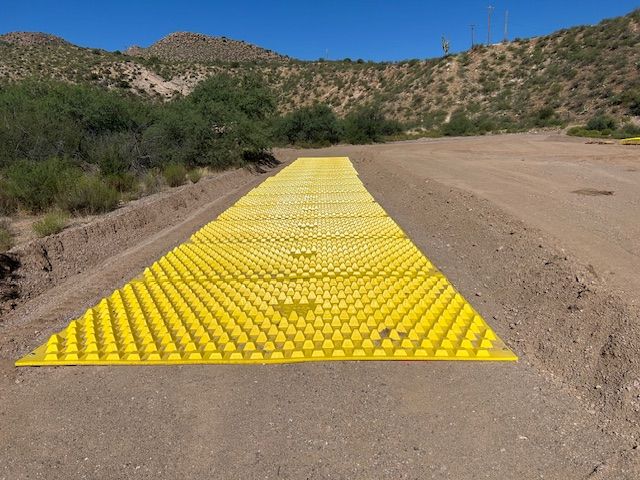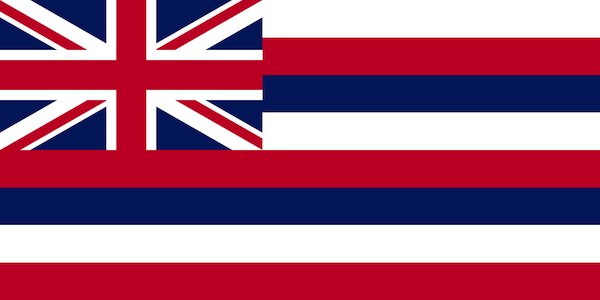Hawaii Stabilized Construction Entrance/Exit TR-1
The volcanic islands of Hawai’i have a climate of regular rainfall giving rise to over 350 fresh water streams. The water resources are provide the essential habitat for a variety of plants, birds and land animals. The coastal zones of Hawai’i support the local industry and sport including fishing, surfing and inter-island trade. These prized water features are a part of the heritage and culture of the islands and are guarded against pollution by local and federal efforts.
Hawaii Department of Health Clean Water Branch (CWB) NPDES Permits
In Hawaii, the Health Department’s Clean Water Branch (CWB) administers the Clean Water Act and the NPDES permit program. Hawaii’s CWB protects and restores inland and coastal waters for the marine wildlife native to Hawaii. The department ensures water quality by conducting coastal water surveillance and watershed-based environmental management, which includes permit issuance, monitoring, enforcement, sponsorship of polluted runoff control projects, and public education. They can identify sources of water pollution through area surveillance, routine inspections, and complaint investigations. CWB oversees compliance with permit conditions via site inspection, source testing, special studies, and corrective measures through administration. They promote community-based watershed management through education and voluntary compliance with environmental management standards. Federal funding is provided for demonstration of best management practice (BMP) projects from the public and private sectors relating to non-point source control.
HAR 11-15 Stormwater General Permit For Construction Activities
Hawaii’s Construction Stormwater General Permits are required for construction activities that disturb an area of one acre or more of land. These permits provide specific requirements and criteria for controlling pollution sources during construction. To request coverage under a general permit, the contractor must create and submit a Storm Water Pollution Prevention Plan (SWPPP). The SWPPP is a plan defines the techniques that will be used to prevent pollution from leaving the site.
Stabilized Construction Entrance/Exit TR-1
A stabilized construction access is a point of entrance/exit to a construction site that is stabilized to reduce the tracking of mud and dirt onto public roads by construction vehicles. A stabilized construction entrance is a pad of aggregate underlain with filter cloth located where traffic will be entering or leaving a construction site to or from a public right of way, street, alley, sidewalk, or parking area. The purpose of a stabilized construction entrance is to reduce or eliminate the tracking of sediment onto public rights of way or streets. Reducing tracking of sediments and other pollutants onto paved roads helps prevent deposition of sediments into local storm drains and production of airborne dust. Entrances and exits require periodic top dressing with additional 3-6 diameter stones. This BMP should be used in conjunction with street sweeping on adjacent public right of way and should be constructed on level ground only. Stabilized construction entrances are rather expensive to construct and when a wash rack is included, a sediment trap of some kind must also be provided to collect wash water runoff.
Stabilized Construction Roadway TR-2
Stabilized Construction Roadway are access roads, subdivision roads, parking areas, and other onsite vehicle transportation routes that should be stabilized immediately after grading, and frequently maintained to prevent erosion and control dust. Areas that are graded for construction transport and parking purposes are especially susceptible to erosion and dust. The exposed soil surface is continually disturbed, leaving no opportunity for stabilization. However, these roadways must be removed or completely paved upon completion. Gravel construction roads are moderately expensive, but cost is often balanced by reductions in construction delay. No additional costs for dust control on construction roads should be required above that needed to meet local air quality requirements.
Entrance/Outlet Tire Wash TR-3
A tire wash located at stabilized construction access points and is designed to remove sediment from tires and under carriages. This helps prevent sediment from being transported onto public roadways. The tire wash requires a supply of wash water, a drainage ditch that will collect runoff from the wash area to a sediment trapping device, and a turnout or doublewide exit. Do not use where wet tire trucks leaving the site leave the road dangerously slick.
FODS Track out Control Mats
FODS Trackout Control System is a reusable entrance option that will save you the cost and stress of maintaining a gravel stabilized construction entrance. FODS mats are easily set up and can be laid on concrete, asphalt, and soil while requiring no excavation. They can easily be relocated and maintained without the need for big machinery. A standard layout that commonly replaces these stabilized construction exits is a 1x5T which provides a wide turning radius and a 35’ of length. The mat is made out of a strong high density composite material and is made up of teeth that are specially designed to manipulate tires and remove dirt and sediment. Debris is removed and collected at the bottom for easy cleanup. FODS effective rockless design removes the need for periodic stone dressing, expensive wheel washes, and sediment traps. When sediment or rain fills the mat it can be easily cleaned and restored to full functionality using the FODS shovel. These durable mats are designed to withstand roughly 10+ years of service. FODS can help you save money on construction entrances for years to come.
Additional Resources:
Department of Health: Clean Water Branch
Construction Storm Water General Permit FAQs
Stormwater Best Management Practice Manual
Honolulu DES Best Management Practice Manual Excerpt (TC-1, TC-2, TC-3)

